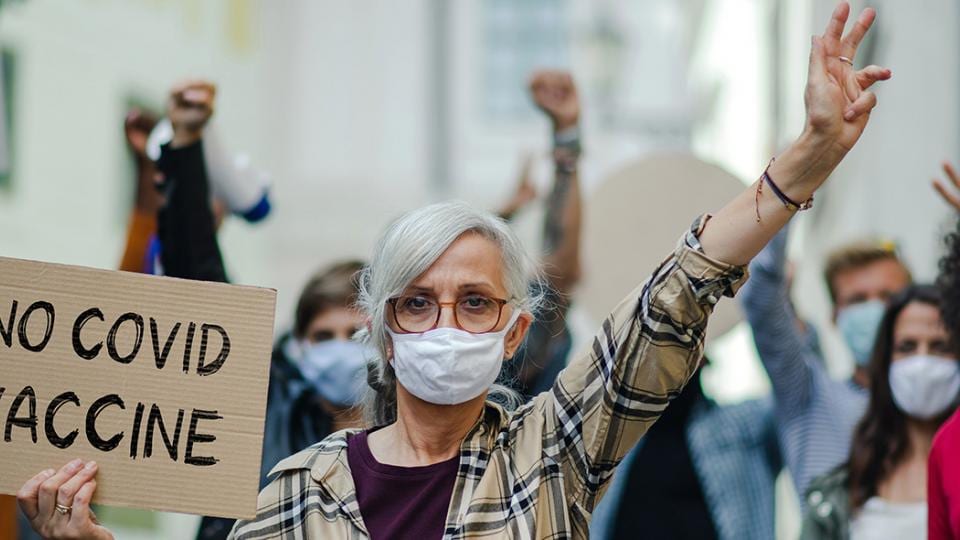Like a needle in millions of haystacks

At the end of September, the Munich Environmental Institute (Umweltinstitut München) and the Bündnis für enkeltaugliche Landwirtschaft (Alliance for Our Grandchildren’s Future) published a study on pesticide drift in Germany. There was much reference to “shocking”, “worrying” and “alarming” conditions. However, when asked about the actual quantities that were detected, all the parties involved were evasive. Peter Müller, head of Bayer Crop Science in Germany, therefore took a closer look at the study, made some astonishing findings and wrote the following open letter to the Environmental Institute.
Dear Mr. Bär,
“All things are poison and nothing is without poison. Solely the dose determines that a thing is not a poison.” Almost 500 years have passed since Swiss physician and scientist Theophrastus Bombast von Hohenheim – better known as Paracelsus – made this legendary statement. That is more than enough time for this revelation to pass into general knowledge. And yet, although the similarly ancient discovery made by Copernicus that the Earth orbits the Sun has long since been absorbed into public consciousness, the same still cannot be said of the aforementioned finding.
To a large extent, that is because this important principle is often grotesquely overlooked by organizations that are otherwise very keen to reference science when talking about environmental and, in particular, climate issues. They ignore it when results do not fit their own preconceptions or objectives. Unfortunately, the events of last week prove once again that your Institute and the Bündnis für enkeltaugliche Landwirtschaft – which is financed by organic farming businesses – are among the most prominent protagonists of this approach.
During a press conference, where you were joined by Germany’s Federal Minister for the Environment, Svenja Schulze, you announced that pesticides are “uncontrollable” and that “contaminated air is an incalculable health risk”. Minister Schulze gave her backing and spoke several times about “worrying” circumstances.

Setting aside polemics for a moment, let us consider the facts. TIEM Integrierte Umweltüberwachung, the environmental monitoring institute you commissioned, found traces of 138 substances that are being used or have been used in agricultural applications worldwide. At the time the measurements were taken, almost a third of these substances were either no longer licensed for use in Germany or have never even been licensed for use here. This indicates that these measurements relate to substances originating from farther afield, i.e. from outside Germany.
When organizations such as yours publicly announce they are “shocked” to have found “cocktails of pesticides even in the most remote corners of Germany”, people with even the slightest scientific inclinations ask themselves one question: “What quantities and concentrations are we talking about?”
Only by answering this crucial question could anyone hope to draw conclusions about whether the substances found could even slightly affect the health of people or animals. Detection alone tells us nothing. After all, modern analysis methods allow us to detect concentrations equivalent to half a sugar cube in Lake Constance, or a single grain of rye in a 20,000 km-long freight train packed full of grain. In fact, scientists using these technologies are finding traces of pesticides, tire wear, microplastics and many other substances even as far away as the Arctic and Antarctic.
The fact that, just a few hours after a sandstorm in the Sahara, millions of vehicles across the whole of Europe can be veiled in a grayish brown residue goes to show how quickly dust and particles can spread. We observed the same effect just a few days ago, when smoke from wildfires in California drifted from the west coast of the United States across North America and was then carried over the Atlantic to Europe by a low-pressure system.
Surely calls for a ban need to be based on clear evidence?
However, your report – spanning over 130 pages – makes barely any mention of quantities or concentrations. The press release that accompanied the study’s publication does not contain a single word on the matter. Even the journalists who raised questions several times during your press conference did not get any clear answers.
I asked myself why that was. After all, surely calls for a ban on the pesticides under discussion need to be based on clear evidence of the associated effects on people and the environment?
A quick look at the sparse quantity data in your report shows that your samples are of such an infinitesimally low concentration that you have obviously decided it would be better not to mention them at all. However, following in the footsteps of Paracelsus, I took the liberty of examining the quantities you found in your passive collectors more closely – albeit only on an illustrative basis for the substances you criticize most often. The results can be summed up in one sentence:
The quantities that an adult could consume every day of their life without putting their health at risk, are 100, 1,000 or even 10,000 times higher than the concentrations found by the company you hired over the entire collection period of several months.
These results are presented in graphs below. In each instance, on the right-hand side, we have only depicted the sample with the highest concentration, as lower concentrations would be too small to see. Most of the average values found by your experts are well below these maximum concentrations.
It is true that foods regularly need to be recalled in Germany due to contamination with toxins that have traveled from the field to the food chain in concentrations that pose a health risk. Yet these toxins are certainly not synthetic or chemical pesticides, but rather mold toxins, ergot alkaloids and tropane alkaloids from toxic plants. Given that you and your companions from the organic farming sector champion healthy eating on a daily basis, I find myself wondering why you have never addressed this far greater risk.
To avoid any misunderstandings, it is important to recognize that chemical crop protection products – in large enough doses – are of course toxic and harbor potential consequences for the environment and biodiversity. Nonetheless, without these products, a large proportion of global harvests would be obliterated by diseases and pests. Bayer is supporting the efforts of politicians, farmers and organizations such as yours to considerably reduce the absolute volume of crop protection products and drastically lower their general environmental impact. To achieve this goal, Bayer is investing more than any other company in our sector in research into new products, breeding methods and the digitalization of agriculture.
Trying to feed an ever-growing global population in the most sustainable way possible is a huge challenge. We will only overcome this challenge if all parties are prepared to debate the best way forward in an objective and constructive manner based on scientific findings. However, your alarmist communication, which fails to make any mention of the substance quantities detected, once again leads me to doubt whether the Environmental Institute is even interested in joining such a dialog.
Any organization that finds the most minimal traces of crop protection products – traces many times lower than the legal limits – and describes these as “shocking” and calls for “immediate bans” is scare-mongering. It is dividing society and discrediting farmers and scientists who work in the agricultural sector.
Any organization that complains pesticide drift can cause the “loss of entire harvests” but at the same time stays silent about the fact that up to 40 percent of the world’s harvests would be destroyed without these products, completely disqualifies itself from the debate about the actual problems facing agriculture and nutrition – a debate that is hugely important.
Here at Bayer, we firmly believe that sensible solutions for the future are brought about not by conflict, but by cooperation; not by polemic and polarization, but by dialog that is based on facts.
If you are interested in that approach, then I am more than happy to talk.
Best regards,
Peter Müller


























